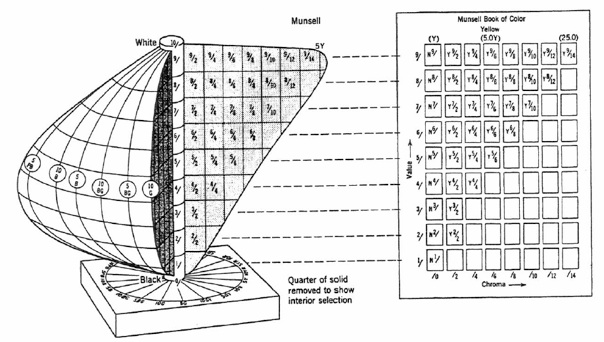Isotropic Color Spaces

Uniform Color Space
If you want to compare two different distances in a color space, then the space must be isotropic. Equal distances must represent equal changes in color appearance. The following papers discuss the choices of experimental color spaces and practical calculations based on X,Y,Z. The papers describe MLab color space that uses actual color chips in the Munsell Book to achieve uniform spacing. Further, they describe 3D LUTS that convert Munsell notation to X, Y, Z, or L*a*b*. This technique avoids the large departures from uniform spacing found in L*a*b*.
This spread sheet can be used to convert Munsell notation to MLab values.
[Munsell 2 MLab]
A second spread sheet can be used to convert L*a*b* to MLab.
[Lab 2 MLab]
J. J. McCann,
"Color spaces for color mapping ",
J. Electron. Imaging, 8, 354-364, 1999.
J. J. McCann, and M. Stokes,
"Color Spaces and Image Quality",
in Proc. First IS&T PICS Conference, 1, 140 144 IS&T Portland, OR, 1998.
J. J. McCann,
" Color Gamut Measurements and Mapping: The Role of Color Spaces ",
in Color Imaging: Device Independent Color, Color Hardcopy, and Graphic Arts IV,
G. Beretta and R. Eschbach, Eds., Proc. SPIE, 3648, 68-82,1999.
J. J.McCann,
"Uniform Color Spaces: 3D LUTs vs, Algorithms",
in Proc. Second IS&T PICS Conference, 2, 204-208, 1999.

Nickerson’s diagram of Munsell Space